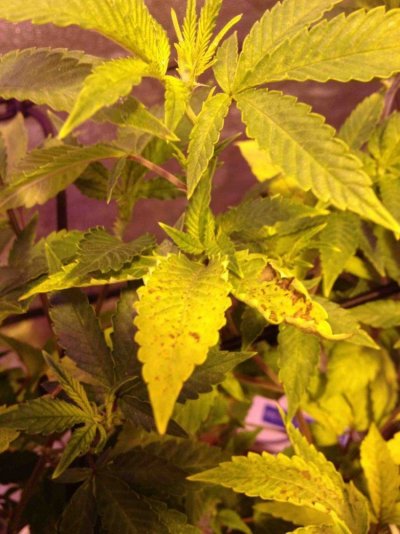Seamaiden,
thanks for the info!
Do not think they are Chinese algae eaters, bought them with the goldfish at the store and they dude said they would gel together, he could be wrong tho.. :shifty:
Like a mentioned in the first post, I has some issues with a rapidly rising PPM read, so I have used distilled water.
Now it seams that the read has slowed down, only bumped 40 in 4 days.
My tap water is loaded with chlorine and other salts, after boiling some water I get lots of white salt residue in my pot, so I do not really think the tap water is any good. PPM read on it is 650! :doctor:
My pH is down to 5.4, so I really need to fix that issue. Just keep going down, even after adding 5 crushed eggshells.
If I add a organic guano that contain Ca, P and Mg directly to the water, this should not be a issue for the fish ?
For your foliar question, it is a bit tricky. I have just started reading up on it but what I have figured out is this:
"Ever since Dr. H.B. Tukey et.al back in the 1950's, showed the true importance of foliar feeding of plant nutrients, it has been widely used in agriculture as a dramatic and fast way of getting nutrients into plants. Foliar feeding is not only useful for regular fertilizing to gain higher quality crops, but it is especially important for the correction of nutrient deficiencies and the addition of micronutrients.
Dr Tukey’s research used radio-active phosphorous and radio-potassium to spray crops. They then measured with a Geiger counter, the absorption, movement and utilization of these and many other nutrients within plants.
They compared the nutrient uptake at the roots from a soil application versus foliar spraying and found that a 95 percent efficiency of uptake compared to about a 10 percent efficiency from soil applications
They also found the speed of absorption and use by foliar applications was immediate, whereas from soil applications absorption and plant usage was very very slow.
Furthermore in soils that have a high pH or low pH, certain nutrients become unavailable for uptake into the plant in the soil. However with foliar spraying you can get the minerals into the plant until you make corrections to the soil.
Foliar spraying also stimulates nutrient uptake from the soil. The leaves after spraying will generate more carbohydrates that it will transport down to the root and release as exudates. This will stimulate the microbial life in the soil and the microbes will thrive around the root mass making more nutrients available to the plant.
..Now!
Several studies since then have showed flaws in this study:
Obviously, materials applied directly to a leaf are more likely to enter the leaf in large quantity than the
same materials applied to the soil. Leaching, chemical reactions, microbial activity, etc. can decrease
what actually reaches the roots and is taken up into the plant. But materials applied to the leaf do not
necessarily travel throughout the entire plant as effectively as they do through root uptake. They often
remain in the same or adjoining tissues but travel no further. This is especially true of those elements
recognized as “immobile” within plant tissues (apart from root uptake and xylem transport).
In the end, seeing all these people testing this method not as a only mean for supplementing nuts to the plant, but more as a added mean, and to test for deficiency.
http://www.ecochem.com/t_foliar.html








